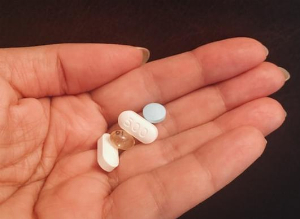Five categories for adult diabetes, not just type 1 and type 2, study shows
Published 14 Mar 2018

Diabetes that begins in adulthood falls into five distinct categories, new research has revealed, with scientists suggesting it is time to ditch the idea that diabetes is largely split into two types.

Researchers say all of the newly classified subgroups are genetically distinct and have numerous differences, including the age at which they tend to occur and different levels of risk for complications such as kidney disease.
The team say the findings shed light on why some diabetics respond very differently to treatment than others, adding that it could help identify those who might be at high risk of complications, and lead to tailored treatment of the disease.
“For the patient, I think it will mean a more individualised therapy [and] a better quality of life,” said Leif Groop, professor of diabetes and endocrinology at Lund University, who led the study.
At present, diabetes is classified into two main forms, both of which have links to genetics. Type 1 is an autoimmune condition where the hormone insulin is not produced, and which generally develops in childhood. The more common form, type 2, in which little insulin is produced or does not trigger glucose uptake by the body’s cells, generally develops later in life and is linked to obesity.
However, the latest study suggests this classification is too simplistic.
Writing in the journal The Lancet Diabetes and Endocrinology, researchers describe how they discovered the five sub-groups by analysing information from 8,980 diabetics diagnosed as adults in a Swedish registry. The results were confirmed using data from 5,795 other adult patients across another three further databases from Sweden and Finland.
The team say the findings show that type 1 diabetes and a late-onset autoimmune form of diabetes can be grouped together as one form, dubbed severe autoimmune diabetes.
However the researchers say what would generally have been called “type 2” diabetes in fact encompasses four categories, two of which are severe forms of the disease.
Traditional forms of classification were made up of two main groups
One, dubbed severe insulin-deficient diabetes, shows similar features to the autoimmune group such as relatively low body mass index (BMI), lack of insulin and early onset, but did not have telltale antibodies indicating an autoimmune disease. Diabetic eye disease was most common in this group.
While this group had the highest proportion of patients on the drug metformin, Groop said this was not the optimum treatment. “They clearly need insulin very soon, almost as much as ‘type 1’,” he said.
The other severe category, called severe insulin-resistant diabetes, is linked to obesity and shows a strong tendency for the body’s cells not to respond to insulin, with these patients showing the highest likelihood of having liver disease, chronic kidney disease, and diabetic kidney disease. This group had a low proportion of patients taking metformin, although the authors say they would be expected to benefit the most from the drug.
The two other categories are mild forms of the disease with one of them, known as mild obesity-related diabetes, linked to high BMI and the other, mild age-related diabetes, generally seen in older patients. The team say both categories can be managed with metformin and lifestyle advice.
“Diabetes is not the grey mass we have been calling type 2 – there are really subsets of the disease that require different treatment,” said Groop.
The categories were discovered by considering six different metrics, including a measure of blood glucose control, age at diagnosis, BMI, the presence of certain antibodies linked to autoimmune diabetes, and a measure of insulin sensitivity.
Genetic analysis revealed that all five subgroups are genetically distinct. Researchers say the groupings held both for those with newly diagnosed diabetes and those who had long had the disease, further suggesting the five categories are not simply down to different stages of the same form of diabetes – although further work is needed to explore whether patients can move between the types. It is also not clear if the different classifications have different causes.
Dr Emily Burns, head of research communications at Diabetes UK said finding diabetes subtypes could help patients, but that more work was needed.
“This research takes a promising step toward breaking down type 2 diabetes in more detail, but we still need to know more about these subtypes before we can understand what this means for people living with the condition,” she said. “For example, whether we’d find the same subtypes in people of different ethnicity or nationality.”
MedicalNewsToday

 Facebook
Facebook Twitter
Twitter


